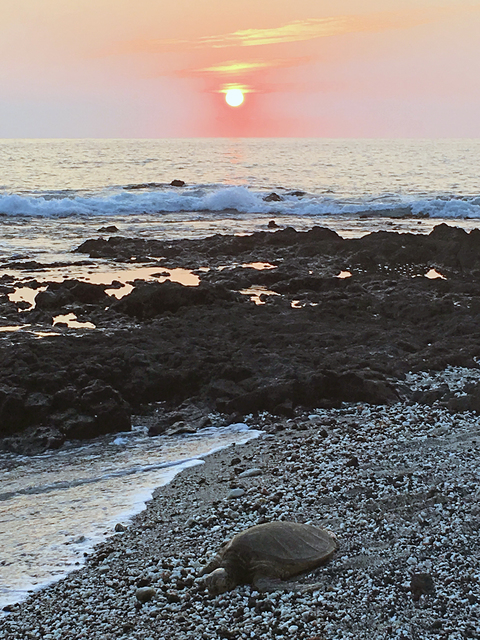Summer is here and with it comes sea turtle nesting season. As a result, beachgoers may witness increased sea turtle activity, including mating in nearshore waters, as well as more basking on beaches. ADVERTISING Summer is here and with it
Summer is here and with it comes sea turtle nesting season. As a result, beachgoers may witness increased sea turtle activity, including mating in nearshore waters, as well as more basking on beaches.
The two species that nest in the islands are the green sea turtle (honu in Hawaiian) and the hawksbill sea turtle (ea). The majority of Hawaii’s honu migrate to French Frigate Shoals to reproduce. However, an increasing number of honu are now nesting on beaches of the main Hawaiian Islands.
Primary ea nesting beaches occur along the south Ka’u coast of Hawaii Island, south Maui, and eastern Molokai. Both species are protected under state and federal laws.
People should keep a distance of 10 feet and not feed, chase, or touch turtles.
Fishermen should check their gear often, use barbless circle hooks and adhere to state gillnet rules. If safe for both you and the turtle, release accidentally caught turtles by following these steps:
1. Reel in the turtle carefully,
2. Hold by its shell or flippers,
3. Cut the line as close to the hook as possible
4. Release with no (or as little) gear or line attached.
Also, white light should not be used near the coastline at night, including flashlights or flash photography. Yellow, amber and shielded lights should be used when lighting is necessary from May to December, when turtles are nesting and hatchlings are emerging.
Additionally, people should avoid driving on the beach.
Report all hawksbill sea turtle sightings, any nesting activity (turtle tracks or nest digging), and injured or dead turtles to NOAA’s Sea Turtle Stranding Hotline: 327-6226 in North Kona and 327-6226 in South Kona.
Report illegal or suspicious activity that may result in turtle injury or death by calling (808) 587-0077 or 643-DLNR.



